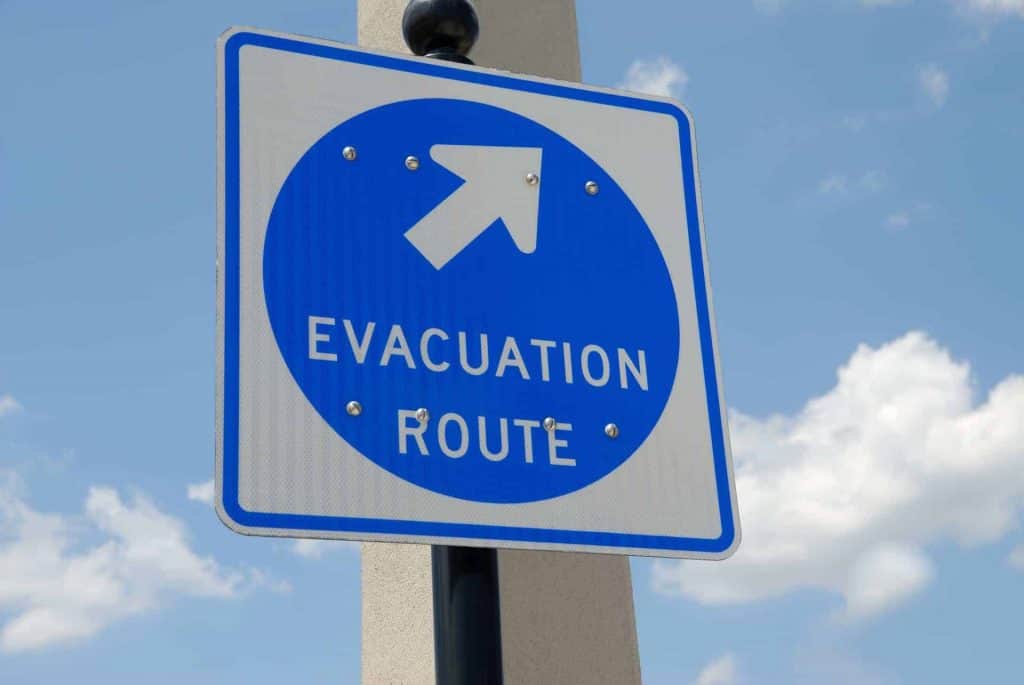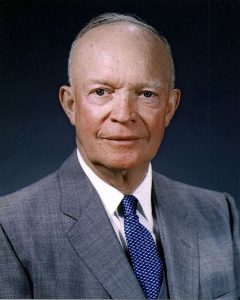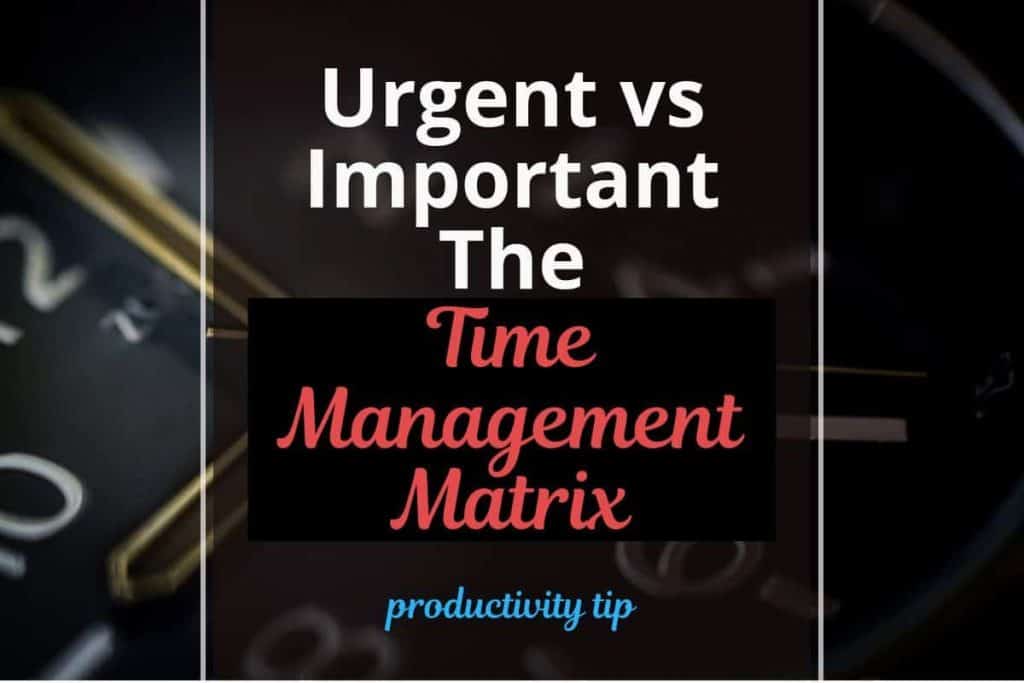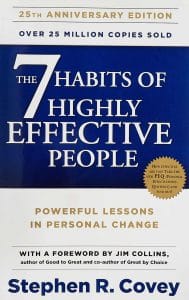🖊 This article was last updated on May 28, 2020
Does your to-do list stress you out? Do you constantly feel overwhelmed, only to end up feeling completely drained of energy and without feeling having accomplished anything of real significance?
If you can relate to this, then you may have trouble with the difference between tasks that are urgent and those that are important. Understanding that difference is very critical. It can go a long way in making your tasks less cumbersome, your to-do list less stressful and your life much easier. The time management matrix can help you with this, so let’s dive in.
PS: I made you a free downloadable template to help you implement this time management matrix yourself, it’s at the bottom of this article.
Urgent or Important?

In this fast-paced world we live in, we have so much to do in so little time, and missing deadlines is hardly an option. To be able to deliver on your promises, you need to eliminate that unnecessary stress. It can certainly help you to define and distinguish between what should be considered as urgent and what should be considered as important.
Even though we aren’t all faced with the same opportunities and perform the same activities, we all still have the same 24 hours in each day. This means we all have the same amount of time to schedule our activities and to complete them as well. You may, however, wonder why some people seem to be able to complete more tasks in a day than others. The answer is often a matter of working smarter instead of working harder and in their skill and ability to manage (and prioritize) their time more efficiently than others.
The Time Management Matrix

Before Dwight D. Eisenhower became the 34th president of the United States, he was a five-star general in the United States Army and Supreme Commander of the Allied Forces in Europe during World War II. He was well known as a very efficiënt person and his methods for time management and productivity were studied by many people.
Eisenhower is known for his famous quote:
“I have two kinds of problems, the urgent and the important. The urgent are not important, and the important are never urgent”
Now, this may be true for the ex-president’s problems, but I’m sure you and I have tasks or obligations that are both important and urgent. And I’d bet there’s even a task or two that’s currently on your to-do list (or on your mind) that’s neither urgent nor important.
Eisenhower’s matrix is based on his Urgent – Important Principle or Decision Principle. It helps in identifying the difference between what is urgent and what is important and is therefore called the “urgent important matrix” or “Eisenhower matrix”.
Author Stephen Covey, in his all-time classic The 7 Habits of Highly Effective People, aptly employs a system that can help you efficiently manage time. Covey helped popularize Eisenhower’s Decision Principle by creating the system known as the time management matrix. This matrix consists of four different quadrants that allow you to prioritize your tasks according to their relative degree of importance and urgency.
The Time Management Matrix consists of 4 quadrants:
- Urgent / Important: fire-fighting things like crises, project deadlines, and urgent problems -> do them now
- Non-Urgent / Important: things like long-term projects planning, exercise, relationship building -> schedule them on your calendar
- Urgent / Non-Important: things like meetings, activities, phone calls and other interruptions -> delegate or minimize these as much as you can
- Non-Urgent / Non-Important: time wasters, trivial tasks, and mindlessly scrolling Facebook -> eliminate these activities during work hours

Important: these are tasks and responsibilities that contribute to the accomplishment of your goals, values, and long-term mission, both professional and personal.
Urgent: these are tasks that demand your immediate attention. These activities usually have a deadline or are tied to the accomplishment of someone else’s goals. They are the ones we concentrate on and failure to address them will result in immediate consequences.
How To Use The Eisenhower Matrix
To implement Eisenhower’s principle and efficiently utilize this time management matrix, you first write out a list of all the tasks and projects that you have to accomplish. Ensure that every single activity that will take up your time is included in your list, however unimportant it is. It’s important at this stage to get everything out of your mind and onto paper.
PS: I made you a free downloadable template to help you implement this time management matrix yourself, it’s at the bottom of this article.
Next, go over those activities and assign each of them to one of the four quadrants, according to their level of importance and urgency.
(Non-urgent and non-important activities deserve no place on your to-do list so you can just cross those out.)
After you’re done building your list and fitting each activity into the quadrant you believe it belongs to, you will then be able to quickly gauge the importance and urgency of every activity that you engage in, and to know where you should focus your time.
Q2 (not urgent but important) is the place to be

You should seek to spend as much time as possible on Q2 activities, which are important, but not so urgent tasks. The Q2 quadrant contains the activities that provide you with lasting happiness, fulfillment, and success. If, however, you are unable to identify what activities are most important to you, it will be difficult to know what things you should be spending most of your time on.
Another issue is that we all have the inclination to focus primarily on the most urgent task at the moment. This is naturally our default mode because we find it difficult to focus on an activity unless it has a deadline looming over our heads. The problem though is that these tasks (like calling your mom to have a chat, doing physical exercise, or reading a non-fiction book) don’t have a deadline. This makes them by default non-urgent and makes it very easy to overlook.
Having a life’s mission and in-depth knowledge of what your core values are will help you identify what belongs in your non-urgent, important tasks list. It will also enable you to actively cultivate and express the necessary self-discipline and willpower to restrain yourself from latching unto whatever to-dos are most urgent (but not necessarily important).
Don’t put off until tomorrow…
Because non-urgent, important tasks are usually not clamoring for our attention, we typically relegate them to the backburner of our lives. Whenever they cross our minds again, we reassure ourselves of getting back to them ‘someday’, after we have taken care of the urgent stuff first.
Unfortunately, that ‘someday’ will often never come, because the reality is that, your schedule of urgent stuff will never clear up. This is a mistake we all make because there will always be newer urgent stuff that will require our attention. Thus we’ll end up neglecting the non-urgent, important things that we’ve kept aside because our lives will continually get busier as we get older, or at least until we retire.
In order to break away from this inherent bias of being restricted from focusing on the non-urgent, important tasks, you must learn to consciously live your life intentionally and proactively. You have to decide within yourself that come rain or shine, you will make time for these activities. And the best way to achieve this is to schedule them on your calendar.
Free template
How would you like a free template to organize and prioritize your to-do list? You can download it right here:
- These Black Friday deals will skyrocket your productivity (2021 edition) - November 11, 2021
- How to Stay Productive as a Digital Nomad - December 23, 2019
- When is the right time to outsource? - December 3, 2019


